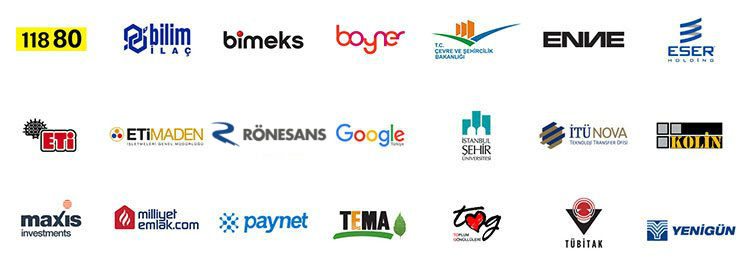
The procurement department lies at the heart of a company, in constant interaction with almost every other department.
But these interactions are often much more difficult than they need to be.
Without clear and seamless communication, even the best-planned procurement strategies can fail.
This situation creates an invisible "gap" between procurement and other departments.
The Breaking Point of Silence: The Chaos Created by Miscommunication
The core problem in many organizations is the lack of a structured communication flow between procurement and other departments (stakeholders).
Requisitions arrive via emails filled with incomplete or incorrect information.
The procurement team spends days chasing an engineer to clarify a specification.
The finance department is notified of an order that is not aligned with the budget at the last minute.
This communication breakdown creates friction, delays, and frustration at every step.
Everyone speaks their own language, and no one fully understands each other.
More Than a Disagreement, An Efficiency Disaster
The cost of this lack of communication is much more than just a few annoying emails.
Studies show that poor communication is one of the most significant factors leading to project failure, and that employees waste an average of 14% of their workweek on communication inefficiencies.
In the context of procurement, the consequences are even more severe:
-
Cycle Times Are Extended: A simple request can take weeks due to missing information and approval delays.
-
Maverick Spend Increases: Stakeholders frustrated with the process bypass it, making purchases on their own from unapproved suppliers, which undermines both budget discipline and negotiating power.
-
Relationships Are Damaged: Constant disagreements and delays position the procurement department not as a business partner, but as a bureaucratic hurdle to overcome.
-
Morale Suffers: The procurement team gets tired of constantly chasing missing information and dealing with complaints from other departments, which prevents them from focusing on strategic work.
Bridging the Gap: Building Seamless Collaboration with Stakeholders
It is possible to close this communication gap and transform procurement into a business accelerator.
This requires adopting a proactive, transparent, and technology-supported communication strategy.
The goal is to ensure the right information reaches the right person at the right time, effortlessly.
Who is a stakeholder in procurement?
In procurement, a stakeholder is any person or group affected by or influencing any stage of the purchasing process.
This includes everyone from the end-user making a request, to the finance manager approving the budget, the engineering team defining technical specifications, and the warehouse manager who receives the delivery.
An effective procurement process requires understanding and managing the needs and expectations of all these stakeholders.
Step 1: Clarify Expectations (Create a Common Language)
The first step to seamless communication is ensuring everyone speaks the same language.
Meet with each department to understand their expectations of the procurement process, the most common problems they face, and the information they need.
Based on this feedback, create a clear and simple "Procurement Policy" or "Communication Guide" for all stakeholders.
This guide should answer basic questions like, "How do I create a requisition?", "How long does the approval process take?", and "How are emergencies managed?"
Step 2: Centralize Communication Channels
Email and phone calls are the primary cause of communication chaos.
Move all procurement-related communication to a single, central platform.
A modern eProcurement platform naturally serves this function.
When requests, questions, approvals, and updates are managed through a single system of record that everyone can access, information doesn't get lost, and transparency increases.
This eliminates the endless follow-up emails asking, "What is the status of this request?"
How can stakeholder collaboration be best improved?
The best way to improve stakeholder collaboration is to proactively inform them about the process and include them in it.
Provide them with real-time visibility into the status of their requests.
Make their lives easier by simplifying and streamlining processes.
Meet with them periodically to get their feedback and improve processes according to their needs.
Making them feel they are part of the process, not an obstacle to it, is the key to collaboration.
Step 3: Provide Proactive Visibility
One of the biggest frustrations for stakeholders is the feeling that their requests have disappeared into a "black hole."
Solve this problem by providing them with proactive visibility.
Offer a portal or dashboard that shows them at what stage of the approval process their request is, whose approval it is waiting for, and the estimated completion time.
This transparency increases the trust of stakeholders and reduces the follow-up burden on the procurement team.
Step 4: Create a Feedback Loop
Communication is not one-way.
Regularly collect feedback from your stakeholders to continuously improve the process.
Conduct short surveys or hold brief quarterly meetings with key departments to ask what is working well in the process and what could be improved.
This feedback loop makes stakeholders feel valued and allows processes to evolve according to their real needs.
Conclusion: Rising Efficiency Through the Power of Collaboration
When you close the communication gap between procurement and other departments, you don't just solve a problem; you ignite an engine of efficiency for the entire organization.
Seamless communication means faster cycle times, fewer errors, stronger stakeholder relationships, and higher employee morale.
This is the most effective way to prove that procurement is not just a cost center, but a strategic business partner that directly impacts the company's success.







